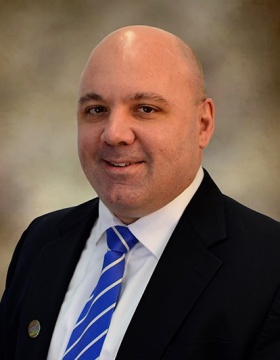Improved graduation rates. Less chronic absenteeism. Some good may come from COVID-19, education expert says
Release Date: June 10, 2020 This content is archived.
BUFFALO, N.Y. - COVID-19 has wreaked havoc on the lives of high school students in 2020. The entire secondary education system has been disrupted by the pandemic – with students, teachers and families navigating unchartered waters. Students will lose nearly 15 weeks of in-school instruction since the stay at home order began, which will set them back during the upcoming school year.
Despite this somber landscape, University at Buffalo higher education administration associate professor Nathan Daun-Barnett, says that some good things may come out of these tough times.
He believes there are some opportunities for more students to enroll in college, as well as ways to improve student engagement.
Graduation rates could rise
“We may see more students complete high school, particularly in high-need districts. One of the barriers for students to finish high school is the successful passage of Regents exams in core academic subjects. This year, New York State cancelled the exams and will waive the requirement under certain conditions, including that the student successfully passes the course. This is the reason we may see additional graduates this year,” says Daun-Barnett.
Lack of jobs could lead more students to enroll in college
“Related to the first, we may see that more students consider college as a possibility because they have completed the high school credential. It is generally reported that more students are second-guessing their decisions to attend in the fall and they may be waiting to see whether campuses are open. It is possible that we see overall declines, but it is also possible that as we get closer to August, students will find that their alternatives to college are limited. The job market may still be sluggish and going to college may seem a better alternative. This is often what we find during economic downturns but the psychology of a pandemic that has an uncertain time horizon is different,” says Daun-Barnett.
Online schooling could ease chronic absenteeism, help students with health issues
“We may find new ways to make education accessible to those that have chronic health conditions. We know that there are tremendous health disparities along lines of race and class. And we also know that chronic absenteeism is an important predictor of poor performance in school. We make assumptions about why students are not in school, but at least for some, health conditions play an important role. Now that we are figuring out how to deliver education virtually, we may find that it can be a vehicle for those who cannot be in school as regularly. We still have more work to do to refine these practices, but we are closer now because so many more educators have been exposed to these strategies,” says Daun-Barnett.
An effective way of teaching
“We may also find that we become better at delivering distance education now that all students and teachers have operated in that environment. We have heard from online students that they feel more engaged by faculty now that all classes are online because we have had to be more intentional about how we provide a high-quality education when students and faculty cannot be in the classroom. These are lessons we can and should apply to all of our distance programs,” says Daun-Barnett. “To be clear, at this point, the in-person experience is better than what we provide in a virtual environment, but we may find improvements in these practices because so many instructors have had to shift their teaching to a virtual environment.”
Media Contact Information
Douglas Sitler
Associate Director of National/International Media Relations
Faculty Experts
Tel: 716-645-9069
drsitler@buffalo.edu
